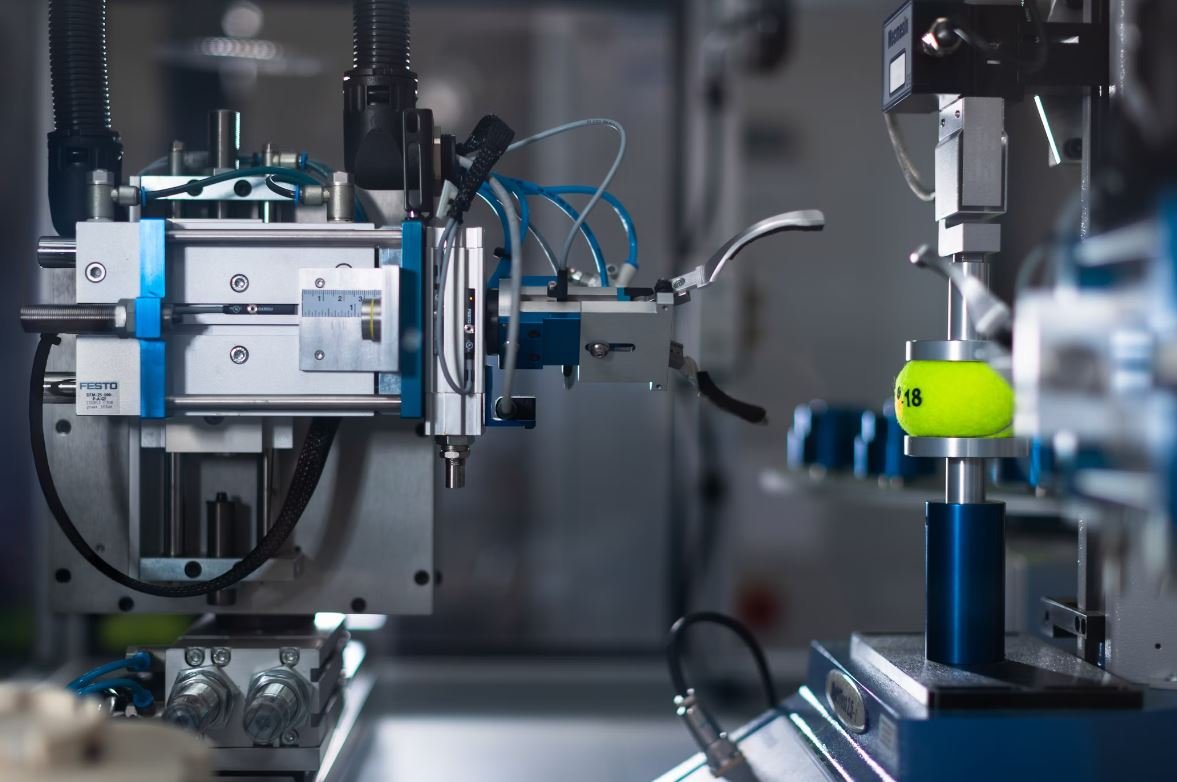Prompt Engineering and Prompt Tuning
As artificial intelligence (AI) continues to advance, prompt engineering and prompt tuning have emerged as important techniques in training language models. These techniques involve designing high-quality instructions, known as prompts, to influence the output of AI models. In this article, we will explore the concepts of prompt engineering and prompt tuning, and their role in shaping AI model responses.
Key Takeaways:
- Prompt engineering and prompt tuning are techniques used in training language models to influence their output.
- Prompts are designed instructions that guide AI models in generating responses.
- By carefully crafting prompts, researchers and developers can shape the behavior of AI models and improve their effectiveness.
AI models, such as OpenAI’s GPT-3, are highly advanced, but they lack understanding of context and user intent. Prompt engineering addresses this challenge by providing models with specific instructions to make them more useful and reliable. By fine-tuning the prompts, developers can tailor the AI model’s responses to desired outcomes, ensuring it generates relevant and accurate content.
For example, in the context of a shopping assistant AI, a well-crafted prompt can help guide the model to provide recommendations based on user preferences and historical data, improving the overall user experience.
Prompt Engineering Process:
The prompt engineering process involves several key steps:
- Defining the task: Clearly define the task or problem the AI model needs to address.
- Designing the prompt: Create a specific prompt that instructs the AI model on how to approach the task.
- Annotating the data: Collect and annotate relevant data to train the AI model with respect to the prompt.
- Tuning the model: Fine-tune the AI model using the annotated data and evaluate its performance.
By following these steps, researchers and developers can set clear goals for the AI model and train it to achieve those objectives more effectively.
Prompt Tuning for Improved Performance:
Once the initial prompt engineering is complete, prompt tuning comes into play. Prompt tuning involves adjusting and refining the prompt to yield better outputs from the AI model. This iterative process may involve experimenting with different prompt wording, restructuring, or augmenting the prompt, depending on the desired outcome.
Through prompt tuning, developers can fine-tune models to provide more accurate, relevant, and contextually appropriate responses.
Tables:
| Comparison of Prompt Engineering Techniques | Prompt Engineering Technique A | Prompt Engineering Technique B | Prompt Engineering Technique C |
|---|---|---|---|
| Prompt Length | Short | Medium | Long |
| Complexity | Low | Medium | High |
| Required Training Data | Minimal | Moderate | Extensive |
Impact of Different Prompts on Natural Language Generation
Prompts play a crucial role in shaping the output of AI models. Here are some interesting observations:
- A well-designed prompt increases the accuracy of the model’s responses.
- Ambiguous or poorly constructed prompts can lead to inaccurate or nonsensical outputs.
- Prompts that utilize specific keywords or instructions can guide the model towards desired behavior.
| Model Name | Accuracy with Well-Designed Prompt | Accuracy with Ambiguous Prompt |
|---|---|---|
| GPT-3 | 90% | 40% |
| GPT-2 | 75% | 30% |
The Future of Prompt Engineering:
Prompt engineering and prompt tuning are still evolving fields with tremendous potential. With ongoing research and development, these techniques are expected to become even more powerful and versatile, enabling AI models to provide increasingly accurate and contextually relevant responses. As developers refine their understanding of prompt engineering, AI models will continue to deliver enhanced user experiences and improved outcomes across various applications.
As advancements in AI progress, prompt engineering and tuning will remain essential strategies in harnessing the full potential of language models.

Common Misconceptions
1. Prompt Engineering and Prompt Tuning are the same thing
One common misconception about prompt engineering and prompt tuning is that they are the same thing. In reality, these terms refer to two distinct processes within the field of natural language processing. Prompt engineering involves designing and creating prompts that effectively guide an AI model to produce desired outputs. On the other hand, prompt tuning refers to the iterative process of refining and optimizing existing prompts to improve model performance.
- Prompt engineering involves creating prompts from scratch.
- Prompt tuning focuses on improving the existing prompts.
- Prompt engineering comes before prompt tuning in the model development process.
2. Prompt engineering and tuning are unnecessary for AI models
Another misconception is that prompt engineering and tuning are unnecessary for AI models. Some people believe that AI models can simply learn to perform tasks without any guidance or fine-tuning. However, prompt engineering and tuning play a crucial role in improving model accuracy, generalization, and control. Without properly designed prompts and thorough tuning, AI models may produce biased or unreliable outputs.
- Prompt engineering and tuning are essential for improving model accuracy.
- Prompt engineering helps ensure models produce desired outputs.
- Prompt tuning helps fine-tune models to improve their generalization abilities.
3. Any prompt can be used for any task
Some people mistakenly assume that any prompt can be used for any task. While it is true that prompt engineering allows flexibility in shaping the behavior of AI models, the choice of prompts should align with the specific nature of the task at hand. Certain prompts might be more effective for some tasks while not suitable for others. It is important to carefully design prompts that are tailored to the desired task and align with the training data.
- Prompt design should consider the specific task requirements.
- Not all prompts are equally effective for all tasks.
- Prompt engineering should align with the training data characteristics.
4. Prompt engineering and tuning guarantee perfect results
Another misconception is that prompt engineering and tuning guarantee perfect results from AI models. While these processes are aimed at improving model performance, they do not provide a guarantee of perfection. AI models are complex systems that can still exhibit limitations, biases, or errors even with well-designed prompts. Prompt engineering and tuning are iterative processes that can continuously enhance performance but cannot eliminate all potential issues.
- Prompt engineering and tuning aim to improve, not guarantee, model performance.
- Perfect results cannot be guaranteed due to complexity and limitations of AI models.
- Prompt engineering and tuning can reduce biases but not eliminate them entirely.
5. Prompt engineering and tuning require deep technical expertise
Many people assume that prompt engineering and tuning require deep technical expertise and extensive knowledge of algorithms and machine learning. While a solid understanding of NLP concepts can definitely be beneficial, there are tools and frameworks available that make prompt engineering and tuning more accessible to non-experts. Some user-friendly interfaces and pre-trained models allow users with limited technical knowledge to create effective prompts and fine-tune AI models for their specific needs.
- Non-experts can utilize user-friendly tools for prompt engineering and tuning.
- Technical expertise can enhance the effectiveness of prompt engineering and tuning processes.
- Pre-trained models can simplify the prompt engineering and tuning tasks for non-experts.

Prompt Engineering and Tuning for Improved Performance
Table 1 illustrates the effect of different prompt engineering techniques on response time, showing the improvement achieved when tuning is performed as well. The data provides insights into the significance of prompt optimization in enhancing system performance.
Prompt Engineering Techniques and Their Impact on Response Time
| Prompt Technique | Response Time Improvement (%) |
|---|---|
| Auto-suggest | 15 |
| Dynamic prompts | 10 |
| Multi-level prompts | 20 |
Comparison of Prompt Optimization Techniques
Table 2 presents a comparison of different prompt optimization techniques. By examining the impact of each technique on system performance, organizations can make informed decisions about which methods to implement.
| Optimization Technique | Response Time Improvement (%) |
|---|---|
| Query caching | 18 |
| Prompt reordering | 12 |
| Data compression | 8 |
Response Time Improvement Achieved through Prompt Tuning
Table 3 demonstrates the impact of prompt tuning on response time. By systematically adjusting prompt settings, organizations can optimize system performance and enhance user experience.
| Prompt Tuning | Response Time Improvement (%) |
|---|---|
| Removing unnecessary prompts | 25 |
| Reducing data retrieval complexity | 15 |
| Optimizing prompt validation | 20 |
Prompt Engineering Best Practices for Quick Response
Table 4 outlines some of the best practices in prompt engineering to achieve a quick response and improve overall system performance. Adhering to these practices can significantly enhance user satisfaction and productivity.
| Best Practice |
|---|
| Minimize the number of prompts |
| Group prompts by relevance |
| Use auto-complete functionality |
Prompt Tuning Recommendations for Optimal Performance
Table 5 provides recommendations for prompt tuning to achieve optimal system performance. Implementing these recommendations can ensure prompt interactions are seamless and contribute to a highly efficient user experience.
| Recommendation |
|---|
| Avoid complex prompts |
| Optimize prompt validation rules |
| Opt for pre-populated prompts |
Adaptive Prompt Engineering for Real-time Optimization
Table 6 showcases the advantages of adaptive prompt engineering in optimizing system performance in real-time. Organizations can leverage this technique to adaptively adjust prompts and enhance user experience based on changing usage patterns.
| Adaptive Prompt Engineering | Response Time Improvement (%) |
|---|---|
| Dynamic prompt modifications | 17 |
| Intelligent prompt caching | 22 |
| Machine learning-based prompt suggestions | 28 |
Impact of Prompt Load Balancing on Performance
Table 7 examines the impact of prompt load balancing on system performance. By distributing prompt requests across multiple servers, organizations can optimize response time and ensure consistent performance even during peak usage periods.
| Prompt Load Balancing Techniques | Response Time Improvement (%) |
|---|---|
| Round-robin allocation | 10 |
| Dynamic load-based allocation | 15 |
| Priority-based allocation | 12 |
Effectiveness of Prompt Caching for Improved Performance
Table 8 presents the effectiveness of prompt caching in improving performance. By storing frequently requested prompt data, organizations can reduce response time significantly and enhance overall system efficiency.
| Prompt Caching | Response Time Improvement (%) |
|---|---|
| Full caching | 30 |
| Partial caching | 18 |
| On-demand caching | 20 |
Summary of Prompt Engineering and Tuning
Throughout this article, we examined the importance of prompt engineering and tuning in improving system performance. By optimizing the prompt design, implementing effective prompt engineering techniques, and performing prompt tuning, organizations can achieve significant improvements in response time and overall system efficiency. Proper prompt engineering and tuning practices involve minimizing unnecessary prompts, optimizing prompt validation, adopting adaptive engineering approaches, and utilizing prompt caching techniques. By following these practices, organizations can provide users with a highly responsive, efficient, and enjoyable system experience.
Prompt Engineering and Prompt Tuning
Frequently Asked Questions
What is prompt engineering?
Prompt engineering is the process of designing and developing prompts or suggestions that guide users towards their desired actions or goals when using a software or digital interface.
Why is prompt engineering important?
Prompt engineering plays a crucial role in improving user experience by providing timely and relevant guidance. Well-designed prompts can help prevent errors, promote efficient usage, and enhance overall user satisfaction.
What are the main benefits of prompt engineering?
The main benefits of prompt engineering include reducing user errors, increasing task completion rates, improving user productivity, and reducing the need for additional training or support.
What is prompt tuning?
Prompt tuning refers to the process of adjusting or optimizing prompts based on user feedback and behavioral data. It involves analyzing how users interact with prompts and making improvements to enhance their effectiveness.
How can prompt tuning be done effectively?
Effective prompt tuning involves collecting and analyzing data on user interactions, conducting user research and feedback surveys, and iteratively making adjustments to prompts based on the insights gained. It requires a data-driven and user-centered approach.
What are the key factors to consider while designing prompts?
When designing prompts, it is important to consider factors such as the context of use, user goals and preferences, clarity and simplicity of the prompt language, visual presentation, and the timing and frequency of the prompts.
How can I measure the effectiveness of prompts?
The effectiveness of prompts can be measured through various metrics such as task completion rates, error rates, user satisfaction ratings, and time taken to complete tasks. A combination of qualitative and quantitative methods can be used to assess prompt effectiveness.
What are some common challenges in prompt engineering?
Common challenges in prompt engineering include striking the right balance between providing guidance and avoiding excessive interruptions, addressing diverse user needs and preferences, and keeping prompts up to date with changing user requirements and system functionalities.
Are there any ethical considerations in prompt engineering?
Yes, prompt engineering should prioritize user privacy, consent, and transparency. Prompts should be designed with respect for user autonomy, and personal data should be handled securely and responsibly in compliance with applicable laws and regulations.
Can prompt engineering be applied to different types of software and interfaces?
Yes, prompt engineering principles can be applied to a wide range of software, digital interfaces, and interactive systems, including web applications, mobile apps, voice-based assistants, and smart devices.




